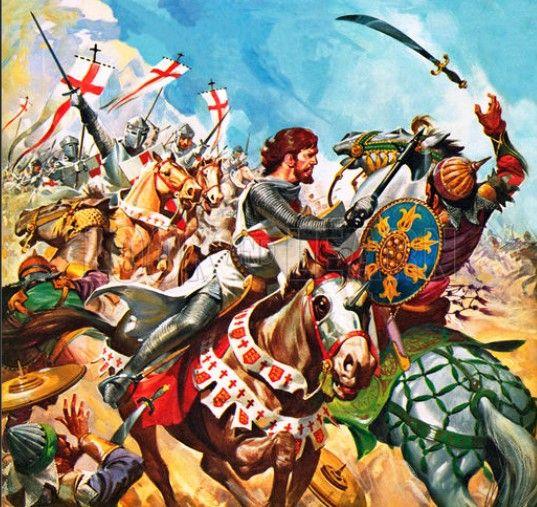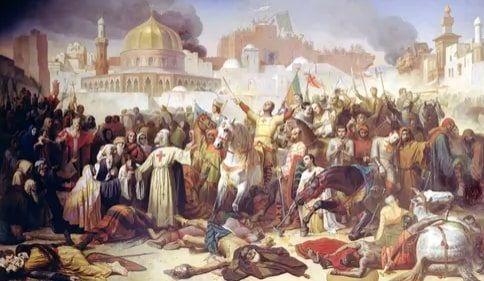INTUSK MAGAZINE
TO THE CORE OF YOUR HEART
Suez Canal History And Overview
February 10, 2023
The 193.3 km long Suez Canal, begins at Port Said and ends at the port of Suez, is considered to be the shortest link between the East and the West due to its unique geographical location; It is an internationally important naval canal connecting the Mediterranean at Port Said and the Red Sea at Suez.
Earliest Attempts
The idea of connecting the Mediterranean Sea with the Red Sea dates back as far as 40 centuries. It has shown through history that it began in the Pharaoh era, passed the Islamic era, and was built to its present state. It is considered to be the first artificial canal to be used for tourism and trade.
The whole idea of a canal connecting the Red Sea and the Mediterranean dates back to the earliest times when the first artificial canal on Earth was built by the ancient Egyptians. Under the Pharaohs, the Egyptians built a canal between the Nile and the Red Sea.
Inscriptions in the tomb of Weni the Elder, who lived during the 6th dynasty of the ancient Kingdom of Egypt (2407-2260 BC), tell us much about the construction of the Egyptian canal and the reasons for its construction - (monuments, warships and transport). However, it is still being debated by scholars as to whether the waterways mentioned there existed from the Mediterranean Sea to the Red Sea.
The first canal was dug during the reign of Senausret III (1887-1849 BC), Pharaoh of Egypt. It connected the Mediterranean Sea to the north and the Red Sea to the south by the Nile and its tributaries. The canal was abandoned due to siltation and was reopened by Sity I (1310 BC), Necho II (610 BC), King Darius of Persia (522 BC), and Ptolemy II (285 BC), Emperor Trojan (117 AD) and under the guidance of Amro Ibn Elass (640 AD) after the Islamic invasion.
Under Necho II, a canal was built between the Pelosian tributary of the Nile and the northern end of the Bitter Lake (located between the two seas), which cost 100,000 human lives. Over the years, however, the canal fell into disrepair, lengthening, abandoning, and rebuilding.
Necho was the first to attempt to build a canal to the Eritrean Sea (extending to the Red Sea and the Bay of Suez near Ismailia). It was later completed by the Persian Darius.
This is a four-day journey here. The Triremes, which is powered by a Hubble, is built with a width that allows two vessels to cross each other. Water was brought to it from the Nile.
The canal runs through the Arabian city of Patumos (near the city of Ismailia), just above the town of Bubastis (near the city of Zagazig).
Memphis (South of Cairo) is located above the mountains that stretch in the opposite direction. At the foot of the mountain there is a canal from west to east, and then a rest in the mountains on the way across the canal, and by noon the south wind blows from this mountain to the Gulf of Suez.
This was the shortest route from the North to the South Seas. This is exactly a thousand furlongs (about 200 m = 1 furlong) from Mount Cassian (east of Port Said) on the border between Egypt and Syria to the Arabian Gulf.
However, due to the prevailing winds, the canal had to be widened, but construction was halted due to allegations that Necho had interfered with the Barbarians' rule.
After this neglection, it was rebuilt by the Persian ruler Darius I (522-486 BC). The canal can now be seen through the Wadi Tumilat.
According to Herodotus, the two trimemes were interchangeable and a four days long journey.
Ptolemy II Philadelphus (285-246 BC) is said to have extended the canal to the Red Sea. It was abandoned during the early Roman Empire but was rebuilt by the Trojan (98-117 AD). Over the next few centuries, it was abandoned again and sometimes dug by different rulers for different but limited purposes.
The canal was rebuilt by Amro Ibn Ellas after the Islamic conquest of Egypt, connecting the Nile to the Red Sea and creating a new supply route from Cairo. It was used to ship grain to Arabia and to make pilgrimages to the Holy Land. 767 AD, Abbasid Caliph El-Mansour cut off supplies to the rebels in the Delta and stopped the canal to starve the rebels in Medina.
Interim Period
The first attempt to build a modern canal was made during Napoleon Bonaparte's Egypt Campaign, and he hoped that the project would cause a catastrophic trade problem for the English. This project was started by Charles Lee Pere in 1799, but due to errors in calculations it was reported that the elevation between the Mediterranean Sea and the Red Sea was too large (the project was soon halted.) The Red Sea is 8 meters above the Mediterranean Has been erroneously calculated to have.
Then, in 1833, a group of French scholars (known as the Saint-Simonians) came to Cairo and, despite problems such as changes in sea levels, took a keen interest in the Suez Project. Unfortunately, the then ruler of Egypt, Mohammed Ali, had little interest in the project, and in 1835 the Saint-Simonians were devastated by the plague. About twenty engineers of them returned to France.
In Paris, the Saint-Simonians formed an association in 1846 to re-examine the possibility of building the Suez Canal. In 1847 Paul Adrien Bourdaloue proved that there was no significant difference in elevation between the Mediterranean and the Red Sea, and Linnant de Bellefonds developed technical plans. Unfortunately, there was considerable British

Construction by the Suez Canal Company
In 1854, the French ambassador and engineer, Vicomt Ferdinand Marie de Lesseps, aroused the interest of Egyptian Prince Syed Pasha for the project.
La Compagnie Universelle du Canal Maritime de Suez (Universal Company of the Maritime Suez Canal) was founded in 1858 with the power to cut a canal and operate for 99 years, after which ownership passed to the Egyptian government.
The idea for the company was first put forward by Egypt and its shares were primarily in the interests of France and Egypt. (In 1875, the British government bought shares of Egypt.)
The pilot study estimated that this would cover a total area of 2,613 million cubic feet, including 600 million cubic feet of land and another 2,013 million cubic feet of water, and the original estimate was 200 million francs.
Initially, the company was facing financial problems and at that time Pasha Syed bought 44% of the shares in the company to help implement the project. However, the British and Turks were concerned about the project and were able to suspend work for a short time until the intervention of Napoleon III.
Excavation of the canal actually began on April 25, 1859, and the first section of the canal was completed between then and 1862. However, work was resumed in 1863 under Ismail, who succeeded Pasha Saeed.
The International Commission was established in March 1864 after Ferdinand de Lesseps re-appealed Napoleon III. The Commission resolved the issues and completed the canal within three years. On November 17, 1869, the Suez Plateau Reservoir was breached and the Mediterranean waters flowed into the Red Sea, opening the canal to international shipping.
The opening of the canal was very solemn and was attended by about 6000 people including Empress Eugene, the Emperor of Austria, the Prince of Wales, the Prince of Prussia and many other heads of state. Two ships entered the canal from its southern and northern locations and met at Ismailia.
Syed Pasha's shares were sold to Britain in 1875 for 400,000 sterling pounds due to Egyptian external debt requirements, but the majority of the shares were held by France.
Under the terms of an international treaty (the Constantinople Convention) signed in 1888, the canal was opened in peace and war, without distinction, to vessels of all nations.
Nevertheless, Britain regarded the canal as important for maintaining its maritime power and colonial interests. The provisions of the Anglo-Egyptian Treaty of 1936, therefore, allowed Britain to maintain a defence force along the Suez Canal.
Suez Crisis
However, Egyptian nationalists repeatedly demanded that Britain withdraw from the Suez Canal region, and in 1954 a seven-year agreement was signed between the two countries, which rescinded the 1936 agreement and facilitated the gradual withdrawal of all British troops from the region.

The canal remained under French and British rule until its nationalization in 1956 by Abdul Gamal Nasser. Since then it has been operated by the Suez Canal Authority.
The canal has now been closed to traffic on two occasions throughout history. The first closure occurred in 1956 after the invasion of Egypt by the British, French, and Israel. This was an invasion mainly due to the nationalization of the waterway. The canal was reopened in 1957.
The second closure occurred after the war with Israel in June 1967 and remained closed until 1975, when Egypt and Israel signed the Second Privilege Agreement.
2021 Obstruction by Ever Given
On 23 March 2021, at around 05:40 UTC, the Suez Canal was blocked in both directions by the ultra-large Golden class container ship Ever Given. The ship, operated by Evergreen Marines, was en route from Malaysia to the Netherlands when it ran aground after strong winds allegedly blew the ship off course. Upon running aground, Ever Given turned sideways, completely blocking the canal.
When the incident began, many economists and trade experts commented on the effects of the obstruction if not resolved quickly, citing how important the Suez was to global trade; the incident was likely to drastically affect the global economy because of the trapped goods scheduled to go through the canal.
But the ship was re-floated on 29 March. Within a few hours, cargo traffic resumed, slowly resolving the backlog of around 450 ships. The first ship to successfully pass through the canal after Ever Given's recovery was the YM Wish, a Hong Kong-based cargo ship.
Layout and Operations
When built, the canal was 164 km long and 8 m deep. After several enlargements, it is 193.30 km long, 24 m deep and 205 metres wide. It consists of the northern access channel of 22 km, the canal itself of 162.25 km and the southern access channel of 9 km.
The canal allows passage of ships up to 20 m draft or 240,000 deadweight tons and up to a height of 68 m above water level and a maximum beam of 77.5 m in certain conditions.
On 15 April 2021 Egyptian authorities announced that they would widen the southern section of the Suez Canal to improve efficiency of the canal. The plan mainly covers about 30 km from Suez to the Great Bitter Lake. It will be widened by 40 meters and the maximum depth will be increased from about 20 metres to about 22 metres.



